Author: Cookie, BlockBeats
On January 6, 2022, TreasureDAO's official Twitter account issued a bold declaration: "The Nintendo of Web3 will be a DAO."

On April 3, 2025, TreasureDAO released a nearly 15-minute video titled "The Next Chapter of TreasureDAO," announcing the decision to completely terminate the game publishing stack and game distribution, shifting towards AI.
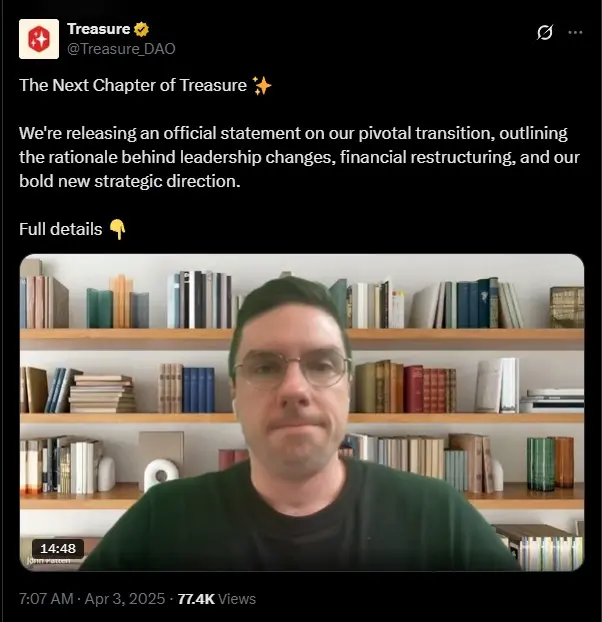
After waiting for 3 years, the long-anticipated "Nintendo" never arrived. How did the once-thriving TreasureDAO gradually fall into obscurity?
Origins
Treasure was founded in September 2021 by John Patten ( @smoldev__) and yyyy ( @0xyyyy). It initially emerged as a Loot derivative project. Loot NFTs are generated from random weapon and equipment names, such as "Crown of Dragons" and "Silver Ring" shown in the image below.
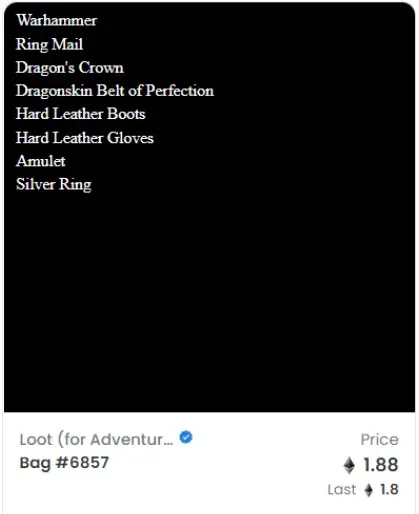
The Loot NFT, which many found incomprehensible at the time, led to the question, "Is this English word made of gold?"
Inspired by Loot, John Patten and yyyy thought, since randomly generated weapon and equipment names as NFTs was a brilliant idea, why not use names of common treasure items in RPGs, like "Diamond" and "Emerald," to randomly generate NFTs? Thus, the "Treasure Bag" was born.
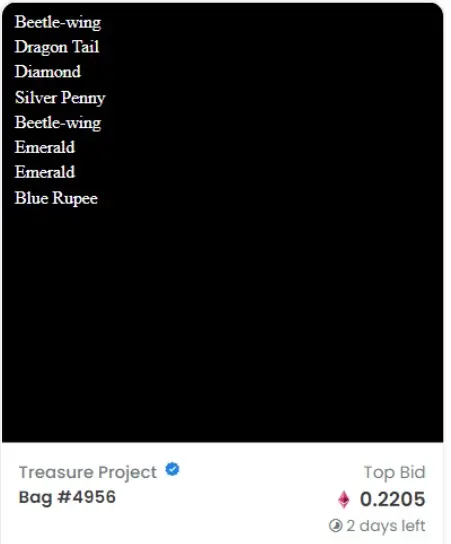
They quickly established a staking website where users could stake NFTs from projects including $AGLD, Loot, and Treasure to earn $MAGIC tokens and Bridgeworld game’s Legion NFTs.
According to a tweet by @arius_xyz on September 8, 2021, staking a "Treasure Bag" NFT could yield 3600 $MAGIC in just 30 days. The historical peak price of $MAGIC was $6, meaning that staking a "Treasure Bag" NFT for 30 days could turn into $21,600 six months later.
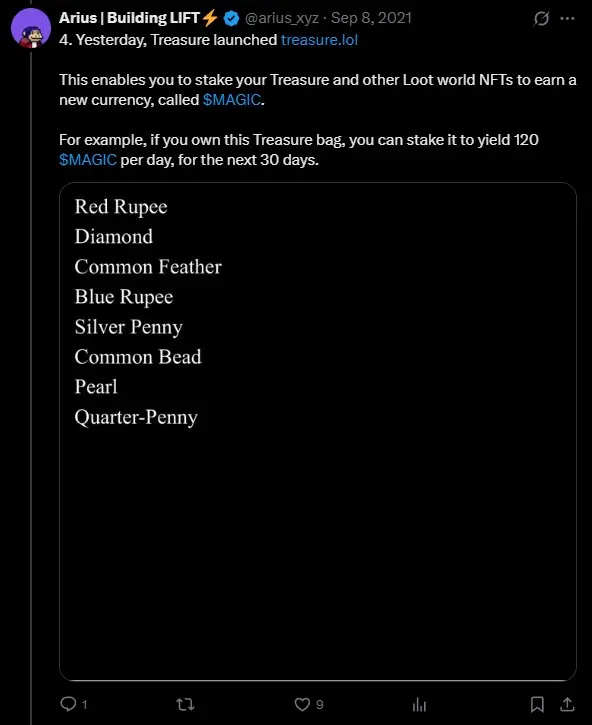
Similar to Loot's vision at the time, Treasure aimed to build a bottom-up on-chain gaming world. After the 8 items in each "Treasure Bag" were individually split into NFTs, the number of staking operations significantly increased. The congested Ethereum mainnet made the gas fees unbearable. Considering the poor player experience and the anticipated high transaction demand after the game's release, Treasure decided to migrate to Arbitrum. TreasureDAO was officially established to promote this grand vision.
At that time, there was no NFT trading market supporting Arbitrum, so TreasureDAO's NFT trading market was launched. Later, this NFT market evolved into Trove, which for a long time was undoubtedly the representative of Arbitrum NFTs.
Glory
At that time, the Treasure team had a leading understanding of how to use NFTs and gamification to create the latest DeFi narrative. Even now, looking back at TreasureDAO's Medium, one would surely exclaim, "They really know how to tell a story." "Liquidity is weather, liquidity is time, liquidity is a measure of spatial range," this metaphor will forever remain on my cryptocurrency quote Mount Rushmore.
Not only could they tell stories, but they could also deliver. The speed at which TreasureDAO advanced its work was astonishing, not just within the Loot ecosystem but across the entire crypto space. Within just one month of launching, they completed operations like resource splitting, resource animation production, and cross-chain asset transfers, especially announcing the integration of a new game called "Life," which was the first community project in the Treasure ecosystem not created by the team. The game concept at that time compelled me to join the Chinese white paper translation work organized by @GavinGPT, who even paid out of pocket to reward all translators.
In the process of evolution, individuals exhibit new characteristics and undergo age-related changes. They go to school, fall in love, pursue careers, experience many unique successes and disappointments in life, and ultimately die.
Life is a long experiential board game. It should be an emotional experience. NFTs reproduce like humans, not like hamsters. Their lifespan is limited but extraordinary, just like our own.
When co-founder John Patten announced the creation of an NFT project called Smol Brains, many did not understand, believing it would dilute the value of $MAGIC. However, Smol Brains later became the leading NFT series on Arbitrum. This was the most successful narrative-driven GameFi series at the time. What impressed me the most was when the storyline progressed to the point where the island inhabited by the Smol Brains was about to sink, and Smol Brains holders had to choose whether to board a rocket to escape to the moon. To build the rocket, Smol Brains had to stake to reach a certain IQ value. At that time, Smol Brains had already become too expensive for me, but I followed daily, wondering where the Smol Brains with insufficient IQ would go. Would they be destroyed?
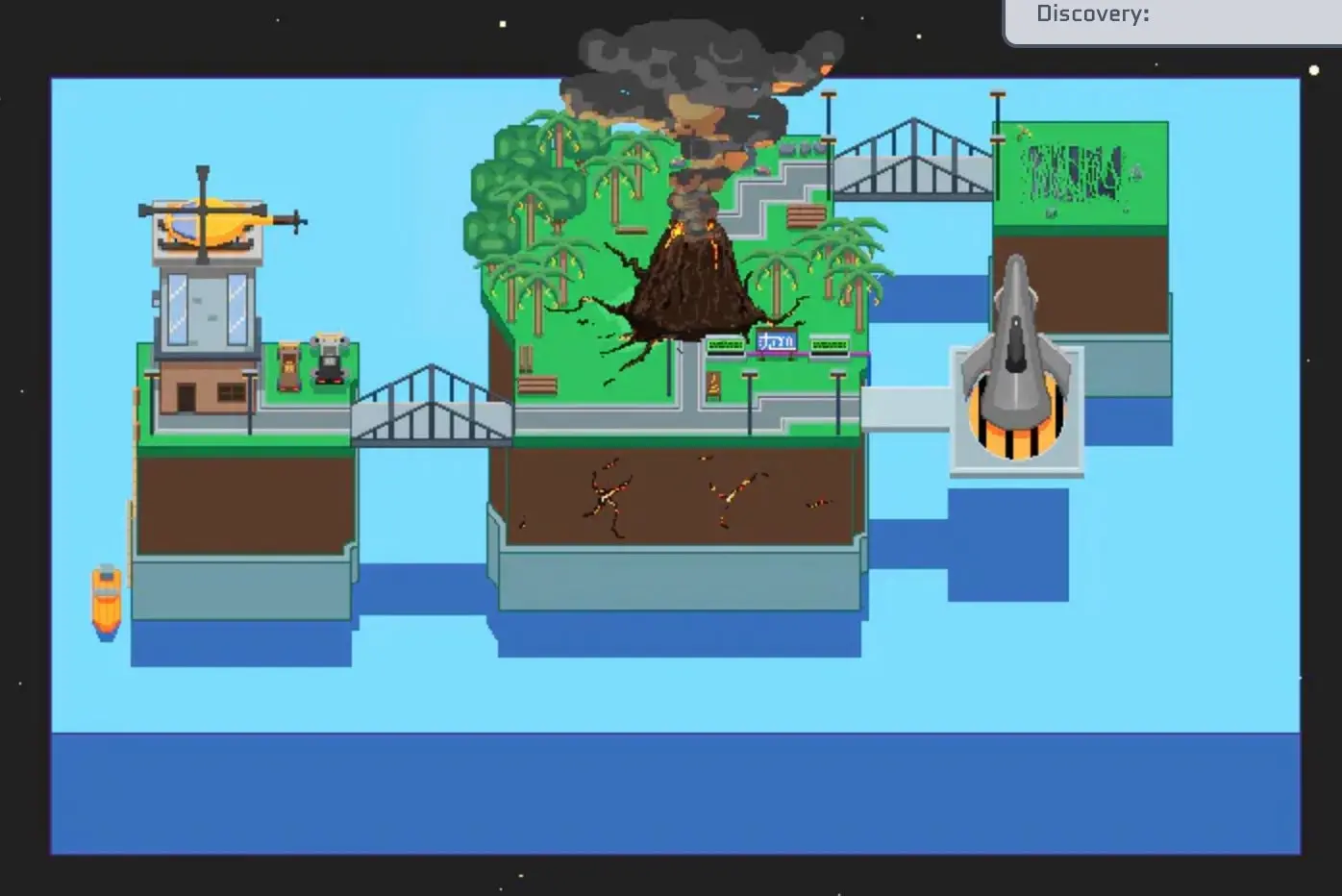
Smol Brain was a Free Mint project. At its peak price, based on the value of $MAGIC, holding a Smol Brains from start to finish could yield $100,000. Another flagship project in the TreasureDAO ecosystem, Bridgeworld's Legion NFT, had a peak floor price of 20 ETH, a time when ETH diamond hands were still proud.
Before Treasure, Arbitrum's daily NFT trading volume was less than 1 ETH. Since the launch of the NFT market on November 13, 2021, it achieved over $285 million in trading volume in just 7 months. By early 2022, Treasure's market was the second highest-grossing NFT market globally, with just the Bridgeworld and Smol Brains series accounting for 10% of OpenSea's total trading volume.
By the end of February 2022, the price of $MAGIC reached its historical peak of $6.
Afterglow
However, the good times did not last long. After peaking at $6, the price of $MAGIC almost continuously declined. By May 2022, the price of $MAGIC fell below $1, and at its lowest, it dropped below $0.3. Although there was a rebound to around $2 in early 2023, since the peak, $MAGIC has never returned to even half of its historical high.
Despite this, games within the ecosystem continued to progress steadily, with more and more games choosing to join the TreasureDAO ecosystem, the most famous being "The Beacon," which exploded in popularity at the end of 2022. This was, in my view, the last glory of TreasureDAO.
Due to the long development time and high difficulty of games, a significant number of games within the ecosystem ultimately fell short, such as the aforementioned "Life" and "Battlefly," which once had NFTs priced in the four-digit range.
Aside from the market attention triggered by this complete shift in development direction, the last time TreasureDAO stood in the market spotlight was due to the AI concept promoted by Shaw. Shaw was originally a developer in the Treasure DAO ecosystem, responsible for the AI game project Smol World for Smol Brains. The vision of Smol World was for each Smol Brains to act as an AI Agent in on-chain games, capable of stealing each other's assets for PvP, while integrating the game itself with the Eliza framework. At that time, influenced by this positive news, Smol Brains surged fourfold.
Doubts
Such a significant strategic shift announced suddenly in such a weak market environment naturally raised many questions.
Chinese KOL Blue Fox, once a supporter of TreasureDAO, commented under John Patten's tweet, "Why now? Why not earlier?"
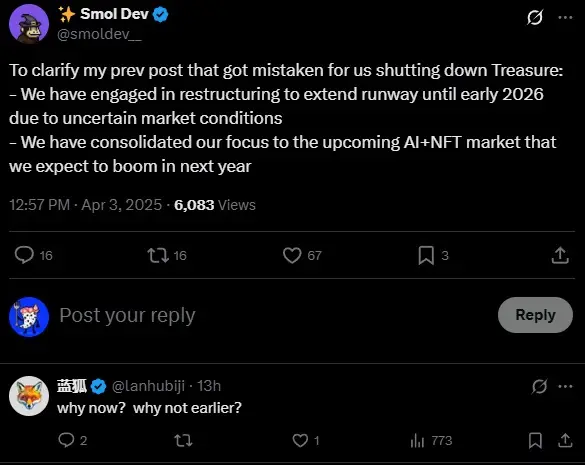
This is also my question. During the peak of the AI concept last year, TreasureDAO was not without market attention. Why did they not pivot at that time but wait until now?
John Patten stated in the video, "This transformation is not a choice but a necessity for survival. Even if financially healthy, this is the most rational choice." According to his disclosure, if only considering USDC-denominated expenditures and the stablecoins held, TreasureDAO currently has enough operational funds to last until July 2025.
Currently, the TreasureDAO treasury holds $2.4 million in stablecoins to support infrastructure and Bridgeworld game development. Additionally, Flowdesk (TreasureDAO's market maker) manages approximately $1.49 million in assets, of which $786,000 is idle and can be reclaimed. If the DAO agrees to the proposal to withdraw this portion of funds, the stablecoin assets will increase to $3.2 million.
The treasury also holds 22.3 million MAGIC, currently valued at about $2.3 million. Grants issued to game projects within the ecosystem are priced in USD, but the actual disbursement is made in $MAGIC, calculated at the average price at the time of issuance. As $MAGIC depreciates, the actual amount of $MAGIC required has significantly increased, greatly reducing TreasureDAO's ability to fulfill its commitments.
Well, for such an urgent situation, it seems it can be explained by "poor decision-making and untimely transformation." However, some players also expressed confusion over TreasureDAO's financial expenditures—after all, the games being developed are not AAA titles; do they really burn that much cash?
According to John Patten's disclosure, TreasureDAO's annual personnel expenditure is about $6.1 million, with annual operating costs around $3 million, and the team size once approached 40 people. When I asked ChatGPT to find a traditional game company with an annual operating cost of about $10 million, the answer was Telltale Games, an American game company known for "The Walking Dead," which had around 90 employees.
Nina Rong, an official from Arbitrum, also commented on TreasureDAO's financial difficulties:
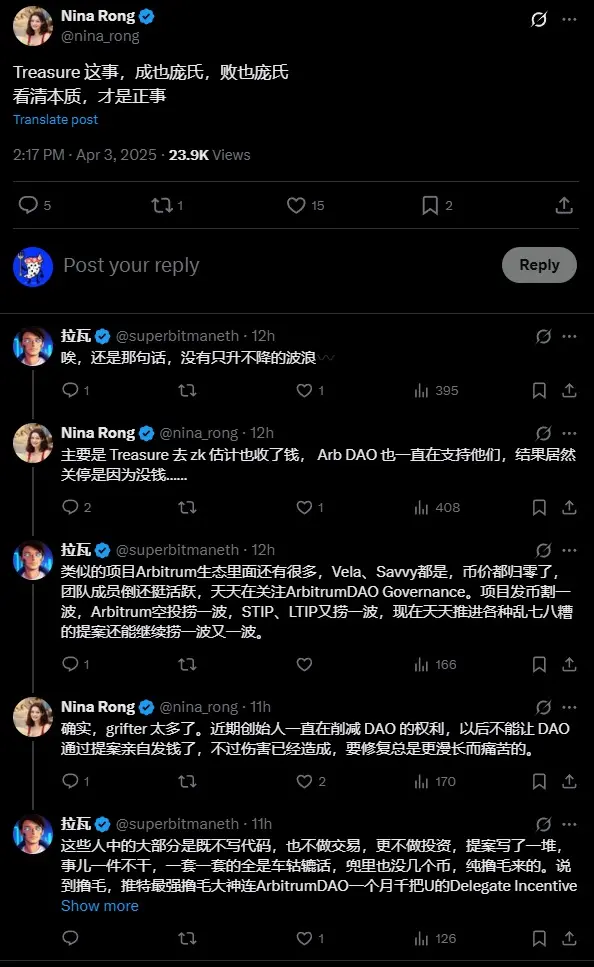
Did TreasureDAO receive money for migrating to zkSync? Yes, but they are also burning through it. The total grant from the Zk Foundation is about $1.1 million, half of which has been committed to game projects and will be unlocked over two years. The annual fixed cost of operating Treasure Chain is $450,000 (denominated in USDC), and even with the planned unlock, Treasure Chain will still incur a loss of $175,000 each year.
Conclusion
The predicament faced by TreasureDAO may reflect the challenges all projects in the crypto space encounter. It is hard to blame them for expanding outward when they had surplus at home, but they tightened their belts far too late. This unexpected official announcement leading to the drop in $MAGIC's price undoubtedly added insult to injury.
Currently, TreasureDAO has laid off 15 employees, completely terminated the game publishing stack and game distribution, and communicated with game partners to cancel remaining grants. Annual expenditures have been reduced from $7.5 million to $3.8 million, with plans to decrease to $3 million within a few months.
However, John Patten also emphasized that if $MAGIC depreciates significantly after the announcement and fails to recover, TreasureDAO will struggle to survive until 2026.
He proposed that TreasureDAO undergo a strategic contraction, focusing on four areas: the NFT market, Bridgeworld, Smol World, and AI Agents. Multiple governance proposals are also forthcoming, including reserving liquidation fees, reclaiming idle assets from market maker Flowdesk, confirming new product directions, and shutting down Treasure Chain.
TreasureDAO will still make games, but the vision of being the "Web3 Nintendo" has been completely erased. Faced with survival, they can no longer pursue their former ideals.
This ideal was not only theirs but once belonged to the entire Web3 community. Whether as project developers or as Web3 users, we may never have lost our ideals, but we might all feel the disappointment of shattered dreams.
The era has ended.
免责声明:本文章仅代表作者个人观点,不代表本平台的立场和观点。本文章仅供信息分享,不构成对任何人的任何投资建议。用户与作者之间的任何争议,与本平台无关。如网页中刊载的文章或图片涉及侵权,请提供相关的权利证明和身份证明发送邮件到support@aicoin.com,本平台相关工作人员将会进行核查。




